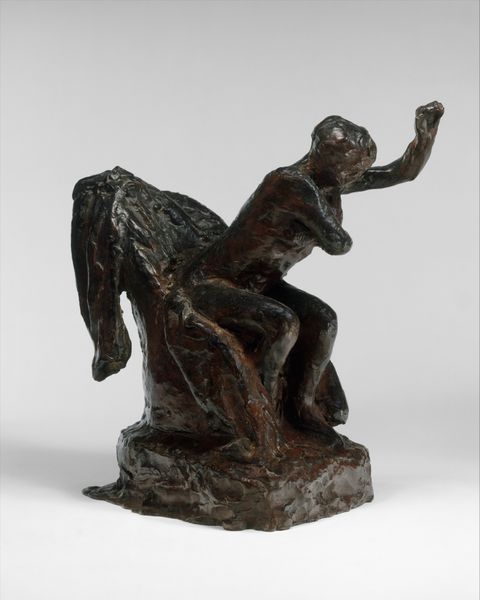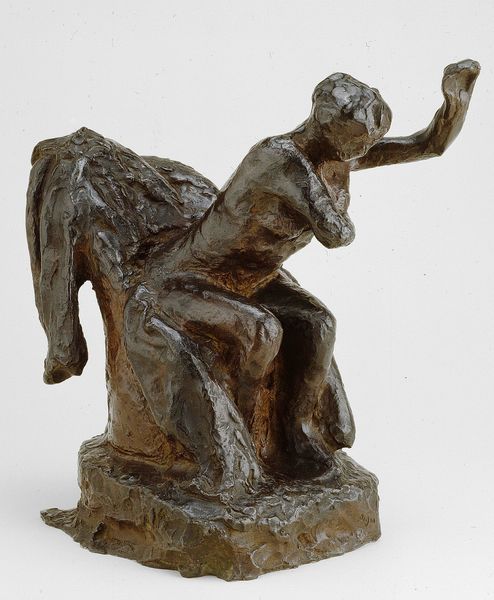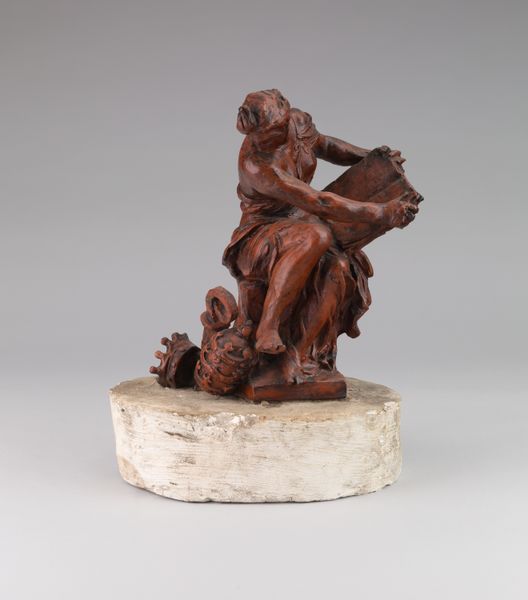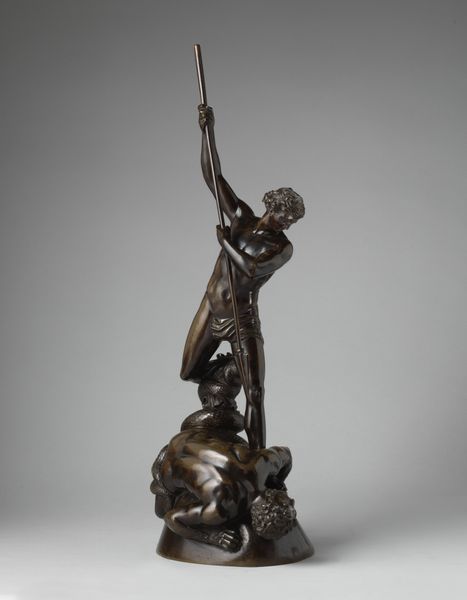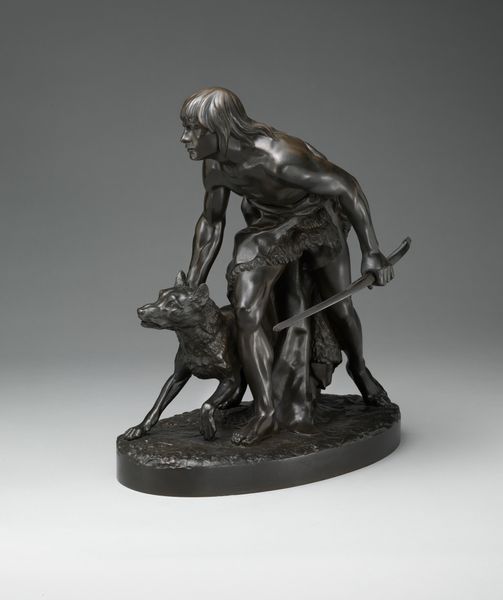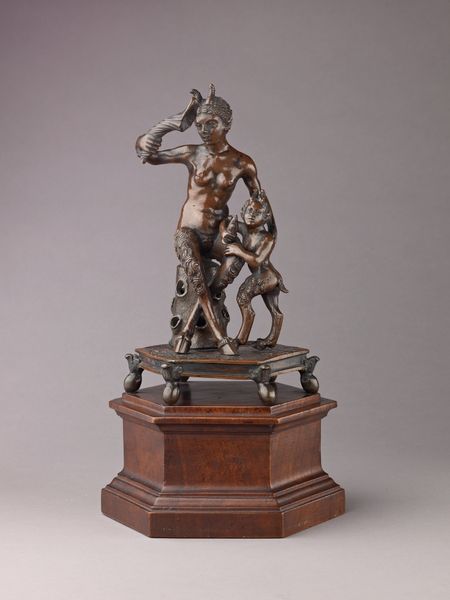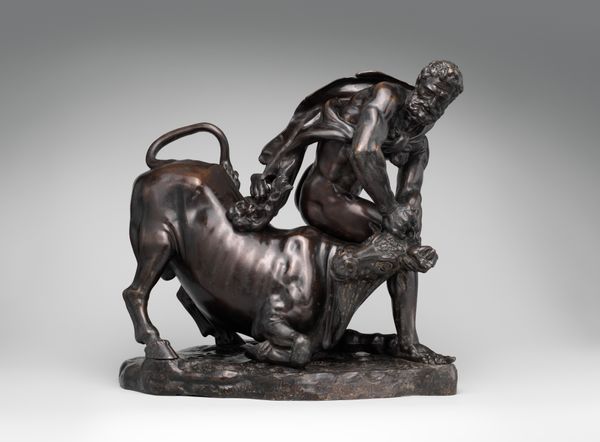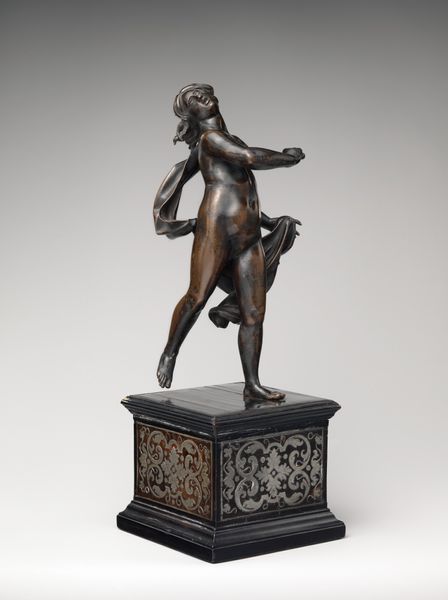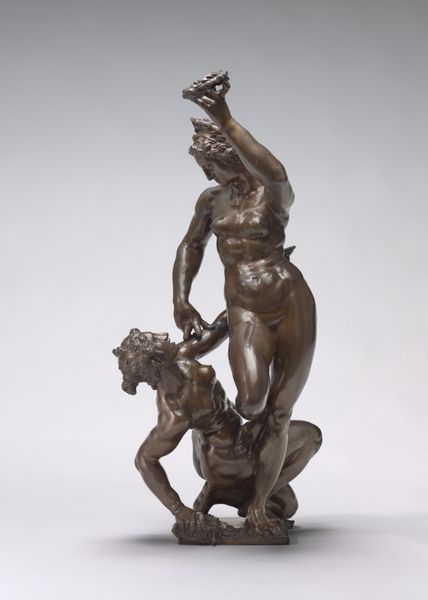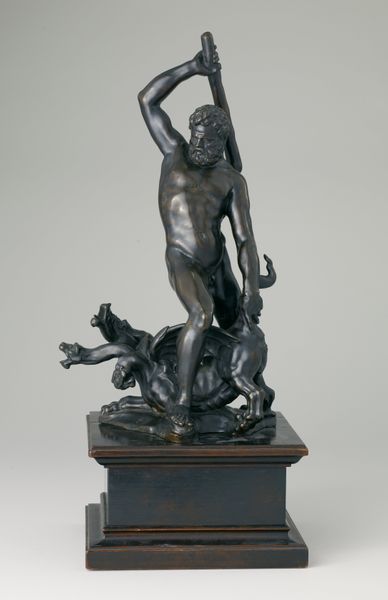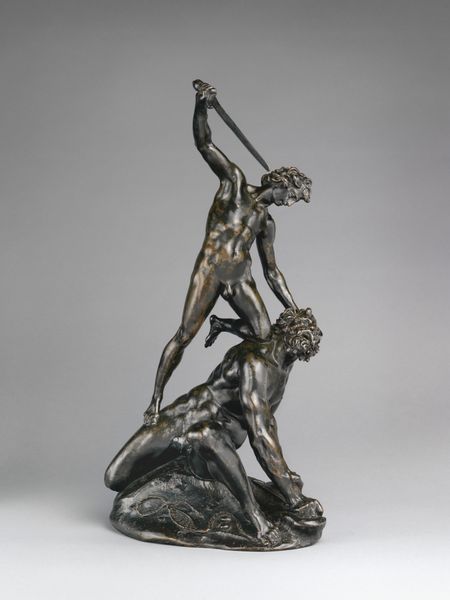
Dimensions: overall without base: 32.2 x 18.9 x 33.6 cm (12 11/16 x 7 7/16 x 13 1/4 in.) height (of figure): 27.7 cm (10 7/8 in.)
Copyright: National Gallery of Art: CC0 1.0
Curator: Edgar Degas's bronze sculpture, "Woman Seated in an Armchair, Wiping Her Left Armpit," dates from the 1890s. Its informal subject, paired with the chosen medium, present a novel, modern perspective on the figure. What strikes you first about it? Editor: The figure's pose is arresting. It disrupts any conventional notion of grace. The texture of the bronze seems rough, almost unfinished, contrasting with the intimacy implied by the title. Curator: Absolutely. Think about the historical context. Degas worked in an era defined by rapid industrialization. The means of bronze production became increasingly accessible, allowing artists to experiment beyond traditional academic sculpture. His choice to depict such a candid, unidealized moment challenges the established norms promoted by institutions and salons of the time. Editor: You highlight the social dynamic. Looking closer, the angle of the seated figure's arm creates an interesting interplay of lines and negative space. The light catches the bronze in ways that define muscular tension, but the figure feels less like a celebration of the body and more like an observation of human habits. Curator: Precisely. It invites considerations of gender, class, and labor. Is she a laundress, taking a moment's respite? Was Degas depicting everyday tasks relegated to working-class women? It brings forward a dialogue about what, and more importantly, whom, fine art chooses to depict and memorialize in bronze. Editor: From a formal perspective, that disruption of classical pose is paramount. Degas plays with balance, asymmetry, and light. There's an emotional detachment—it's a raw, visceral moment captured in a very composed structure, though one might describe the surface rendering otherwise. Curator: A balance indeed. I find myself appreciating how this bronze figure, cast from humble origins, manages to embody modern questions of identity and representation. The very act of creating it echoes society's growing appreciation for modern themes of labor. Editor: I agree, although the way light travels across the undulating surface and accentuates specific contours interests me more, personally. Regardless, it serves as an exceptional artwork to provoke further discourse.
Comments
No comments
Be the first to comment and join the conversation on the ultimate creative platform.
